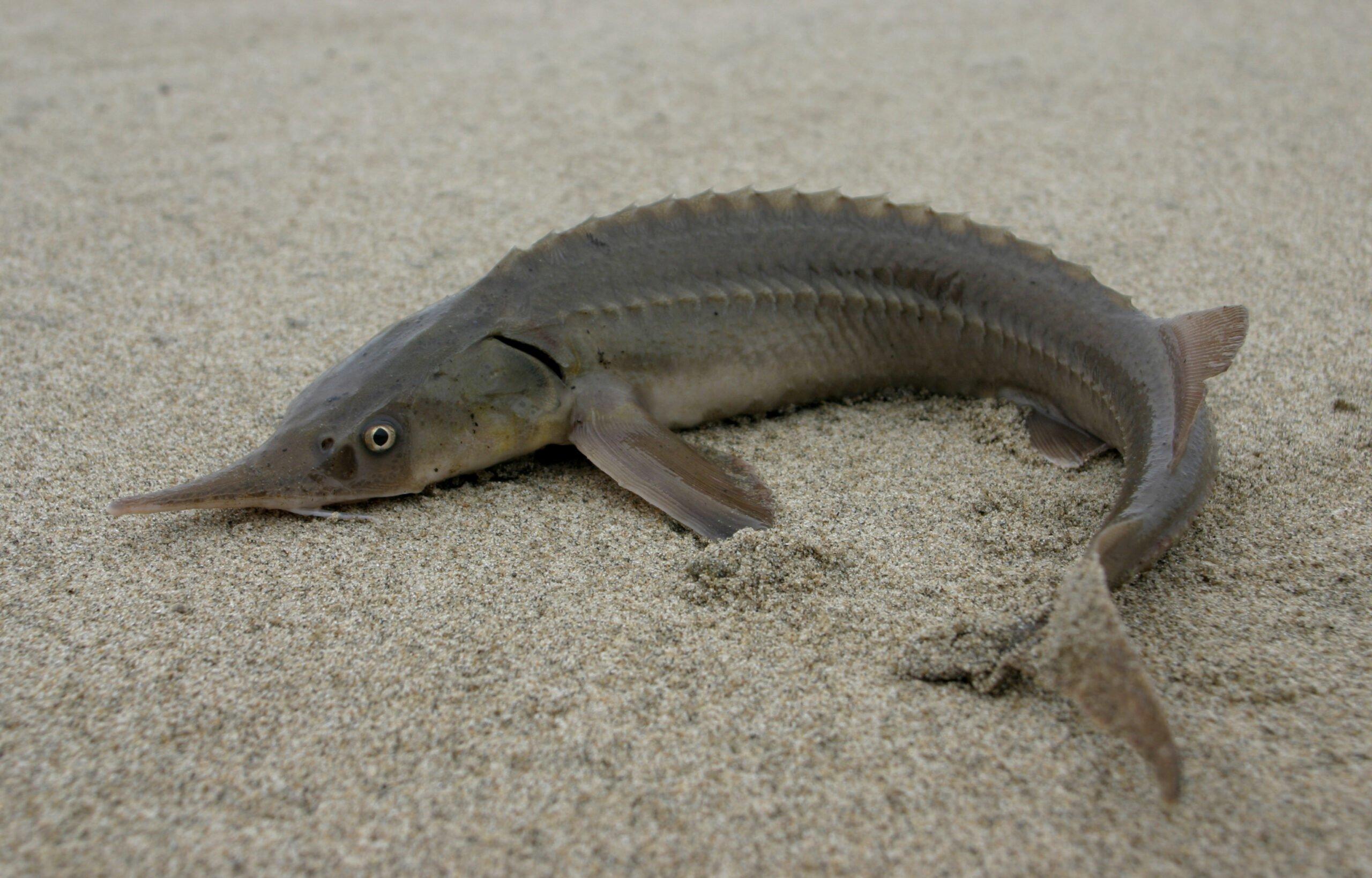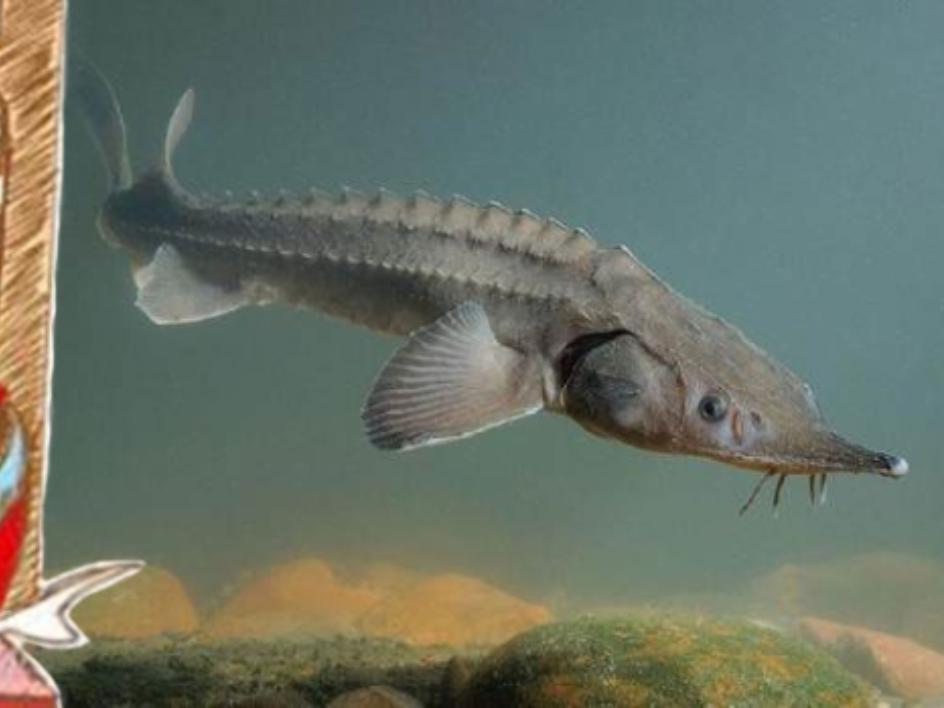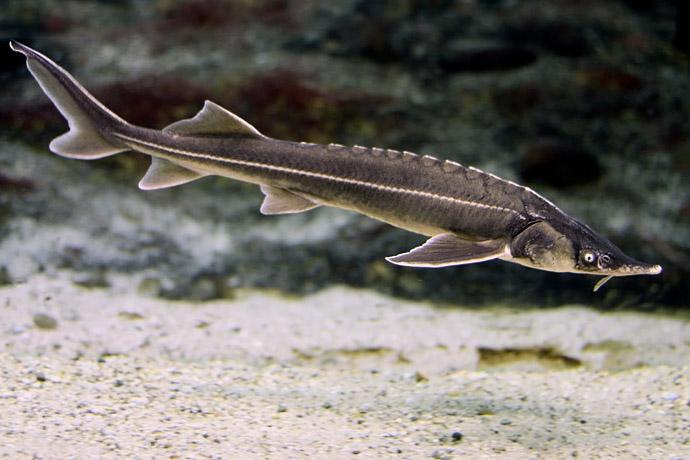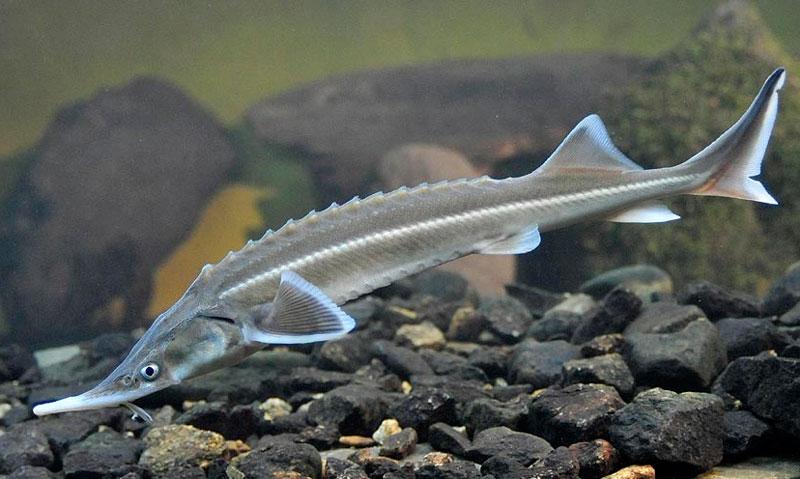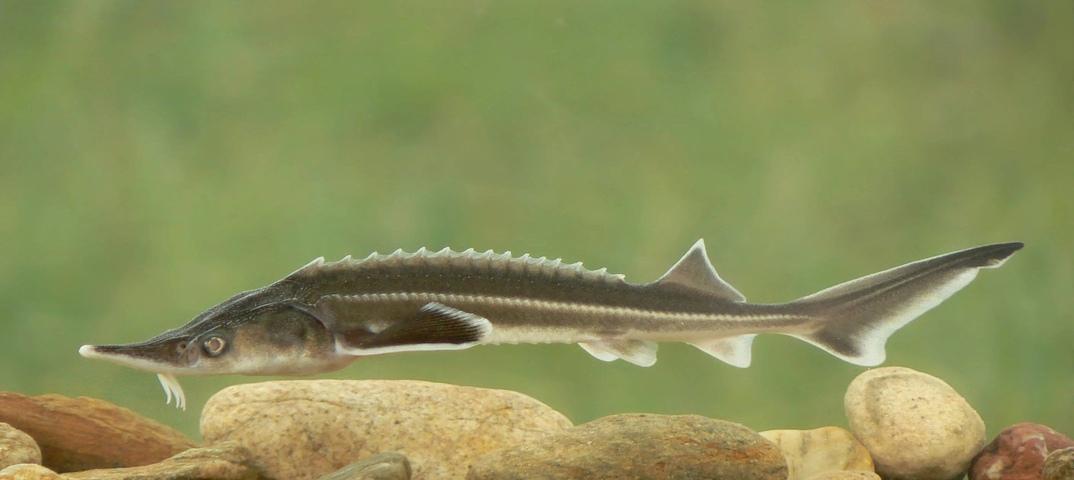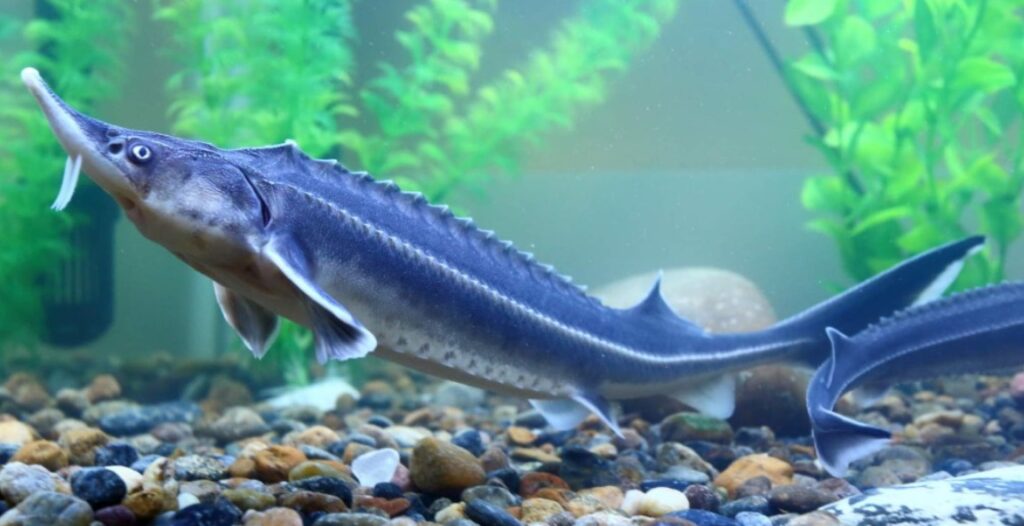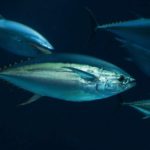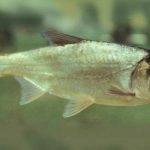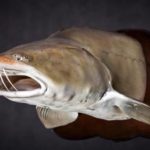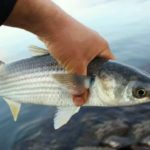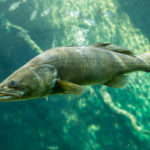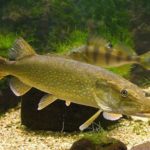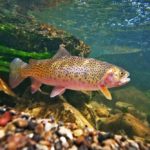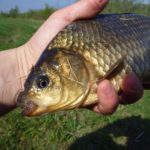The sterlet, a member of the Acipenseridae family, is believed to be one of the prehistoric fish species surviving on earth. Scientists believe that its ancestors evolved towards the end of the third period of the Paleozoic. Despite its modest size, it has many similarities with its other “relatives”, such as beluga and sturgeon. Since ancient times, the meat of the Volga sterlet has been highly prized, and due to overfishing, their fishing is now prohibited.
Appearance
Sterlet belongs to the group of cartilaginous fish, thereby earning the scientific name gannoid. All sturgeons have one thing in common - they have scales that look like bony plates and cover their cylindrical body.
Sterlet is the smallest member of the Acipenseridae family, usually reaching a maximum length of 120 cm and an average size of half a meter, weighing no more than 2 kg. Its body is slender and elongated with a large triangular head, while the snout has an elongated shape, and the lower lip appears to be forked into two sections - thanks to this feature it is easy to distinguish it from other species of the same family. In addition, it has fringed antennae at the bottom of its snout, which are also found in other representatives of this group.
It has been observed that there are two types of sterlet fish: the sharp-snouted variety, which is classified as a classic species, and the blunt-snouted variety, which has a pronounced roundness at the end of the snout.
The head of the sterlet is protected on top by shields that are interconnected, and the body is covered with scales with many tubercles scattered over the surface and similar to grains. The upper fin on the back of the sterlet is located closer to the tail than in other species, and it is also distinguished by the fact that the upper segment of the tail is slightly longer than the lower one.
The classic coloration of this fish species is characterized by dark shades and usually appears grayish-brown, along with some pale yellow shades.
There is another variety of sterlet that does not have a bifurcated lower lip and boasts a noticeable number (up to 50) of tubercles. Both of these species display similar coloration on the abdomen, but in different light shades; sometimes it is even almost white.
It is almost impossible to distinguish between females and males of this species of fish, since their anatomical differences are very weakly expressed. Both sexes have similar body size and coloration, and both are covered with approximately the same amount of bony growths.
Lifestyle
Sterlet is a 100% predator that prefers to live in rivers with crystal clear, not muddy water, under conditions of moderate current. Although they may venture into the sea, they tend to stay close to river outlets. During the summer months, these fish are easily found in shallow areas of the river, while their juveniles live near the mouths of streams or bays.
When winter comes, they migrate to wintering pits, where they remain dormant and do not feed until the ice melts. As soon as spring comes, the sterlet leaves its wintering grounds and swims up the river to reproduce.
Sterlet stands out among other sturgeon species for its tendency to live in large groups, even during the winter months when many of its relatives remain alone.
Lifespan
This unusual looking fish, no different from other sturgeons, has a long lifespan that can last up to 30 years. However, compared to its relative, the lake sturgeon, which can live up to eight decades, it is short-lived.
The life cycle of fish, like many other species, depends on living conditions, food supply and other factors. The average lifespan of a fish is about 20-25 years in the wild.At the same time, if the fish lives in favorable conditions created by man (for example, in aquariums), then its life can be extended to 30 years or more with appropriate care and feeding.
Habitat
Sterlet fish is found in abundance in rivers flowing into the Black Sea, Azov and Caspian waters. It is also found in the northern regions along the Ob and Sev rivers. Dvina
The fish's habitat covers the Volga river and its tributaries, including the Kama, Oka and other rivers. This type of fish is a typical representative of the Volga fish fauna and is found in the Volga River basin, from its source to the mouth of the Caspian Sea.
In addition, the Volga sterlet is also found in a number of reservoirs and lakes that are connected to the Volga River. For example, it is found in Kuibyshevsky, Zhigulevsky and other reservoirs created on the Volga and its tributaries.
In addition, it can be found in Lakes Ladoga and Onega. Moreover, people brought it to other reservoirs, such as the Neman River, as well as to large reservoirs suitable for the microclimate of sterlet.
What does a sterlet eat?
Sterlet fish is a predatory species that feeds mainly on small crustaceans and worms, as it is relatively small in size. It will feed on both bottom-dwelling creatures and animals living in the water column, especially with pleasure absorbing the eggs of other fish. Large adults can also hunt and consume smaller fish.
It's fascinating to know that male and female sterlet eat differently. This is because females tend to stay near the bottom of the water, while males tend to stay higher in the water column. In addition, these fish hunt only at night.
Newly hatched sterlet fry feed on protozoa.As they grow older, they gradually begin to consume larger living organisms.
How does it reproduce
Females become sexually mature at seven and a half years, and males reach this stage at four and a half years. Sterlets do not breed annually, but rather once every two years to allow the females to recover from the intense spawning process. Spawning usually occurs in late spring, early summer, when water temperatures range from 7 to 22 degrees Celsius, with 12-13 degrees being the ideal spawning temperature for these species.
There are times when spawning begins earlier or later, depending on weather conditions and the amount of water present during the spring.
The Volga sterlet has an unusual spawning pattern compared to other fish species, as individuals living in the upper part of the river tend to spawn earlier than those living in the lower reaches. This difference is due to the fact that the spring flood first begins in the upper reaches of the Volga and then moves downstream. When the time comes to spawn, these fish prefer places with fast currents and clear water with a hard bottom covered with pebbles. In addition, they are quite prolific, as females can lay up to 15,000 eggs at a time.
Sterlet eggs are sticky and take several days to develop into fry, which remain in the yolk sac for up to ten days. After the yolk sac disappears, the fry become no more than 1.5 cm in length and bear no resemblance to their adult relatives. The mouth of sterlet fry has a transverse section with antennae, and their lower lip is already divided into two parts, like that of an adult. The head is topped with tiny spines and its color is slightly darker than that of adults, especially around the tail.
Once born, the fry remain in these areas for some time before migrating downstream when autumn arrives and they reach a size of 20 cm. Males and females grow at the same rate and look almost identical; their coloration gives little indication of gender.
It is fascinating to learn that sterlet often interbreeds with other members of its family. In the past, the mating of beluga and sterlet produced a hybrid known as bester, which was of great value. This hybrid has continued to be an object of commercial interest since the 1950s.
The hybrid exhibits the positive traits of both species. Bester has a high growth rate and quickly gains weight, which is typical for belugas. In addition, it reaches reproductive maturity more quickly, which speeds up the reproductive process of the species, especially when bred in captivity.
Natural enemies
Sterlet are generally safe from predators as they usually live in the deepest parts of the water. However, when they spawn, their eggs and fry are vulnerable and can be eaten by other fish. Even their own relatives can absorb them if they accidentally stumble upon a clutch of eggs. Young sterlet are especially at risk of being eaten by catfish and beluga. In Russia, as throughout the world, the main enemy of this fish is man.
Status of this species
Twelve years ago, the sturgeon family showed no warning signs that it would soon be declared a vulnerable species. This is largely due to the fact that water sources are being polluted at an alarming rate, and sterlet can only exist and feed in clean water. Illegal fishermen who are not held accountable for their actions further harm the fish population.As a result, the sterlet was classified as an endangered species and is listed in the Red Book.
Application and value
In the mid-twentieth century, sterlet was traditionally harvested for commercial use due to its abundance. Unfortunately, overfishing has caused the species' population to decline rapidly, leading to it being banned from its natural habitat. Despite this, it can still be found on sale in all known forms, to suit every taste. Thus, fresh, frozen, canned, salted and smoked carcasses are presented. This raises the question: if they are no longer caught in natural conditions, then where do sterlet come from?
The bottom line is that the world is populated not only by poachers, but also by individuals who are trying to keep certain species from becoming extinct. This also applies to many other endangered fish species. As a result, fish farms have been developed where sterlet can be raised in conditions similar to their natural habitat. This endeavor was initially aimed at describing and preserving the species, and ultimately succeeded in returning the sterlet as a common game fish.
However, this is not easy because the quality of farmed fish is lower than that of wild caught fish. However, several recipes for cooking dishes with this type of fish have also been revived. Farm-raised sterlet is not inexpensive, and neither are the dishes prepared from it; however, it allows these endangered species to remain alive, which also applies to other endangered fish species.
Sterlet is considered an undemanding food source, making it excellent for hybridization with, for example, bester. Although this species is facing extinction, its prospects for survival are great thanks to individuals taking steps to prevent this from happening.
Beneficial features
Not only is sterlet meat healthy, but its caviar is not inferior in quality to beluga caviar, and the size of the eggs is somewhat smaller than that of sturgeon. Containing only 85 kcal per hundred grams of meat, this fish makes it suitable for low-calorie diets. Its meat contains a number of minerals and vitamins, such as zinc, chromium, molybdenum, nickel and PP vitamins.
In addition, it is rich in omega-3 fatty acids, which have a positive effect on brain activity and blood circulation in the eyes. Eating sterlet at least twice a week will help keep your cardiovascular system healthy, thereby reducing the risks of a heart attack.
Researchers have found that eating oily fish is good for the skin, helps vision and stimulates the central nervous system. Fluoride, an essential nutrient, has been found to strengthen bones and teeth, protecting them from tooth decay.
Sterlet fish is most often used for making jellies, soups, and also as a filling for kulebyak and rastegai. In addition, fish can be cooked on a spit. To obtain sterlet fillet, it is best to freeze the fish after cutting; this will make it easier to remove the skin and bones.
When preparing dishes with sterlet, remember that prolonged heat treatment kills most of its beneficial substances. Raw sterlet is considered the most useful; this means that you should eat it salted or pickled. It is still useful if consumed boiled, but fried is the least useful and even harmful, as it complicates digestion. Therefore, only people who do not have digestive problems should eat fried sterlet.
The only potential danger associated with eating fish is individual intolerance to seafood. Additionally, people with poor pancreatic function should avoid eating fish, as PUFAs (polyunsaturated fatty acids) can worsen their condition.
Boiling the sterlet for about 15 minutes will help retain the most nutrients. The same applies to other types of fish. It is believed that sterlet soup is especially tasty when boiled, but it should not be cooked for too long, otherwise it may be overcooked.
Back in tsarist times, when workers on the Volga transported barges along the river, they ate hearty sterlet fish soup to restore strength and vigor.
Unfortunately, this type of fish is no longer so numerous due to human activity. People not only catch it in large quantities, but also pollute water sources; in such conditions it is almost impossible for any fish to survive. This results in fewer and fewer fish populations available for human consumption.
People, of course, do their bit to preserve the species, but this may not be enough. Avoiding the worst requires a significant amount of labor and expense.

